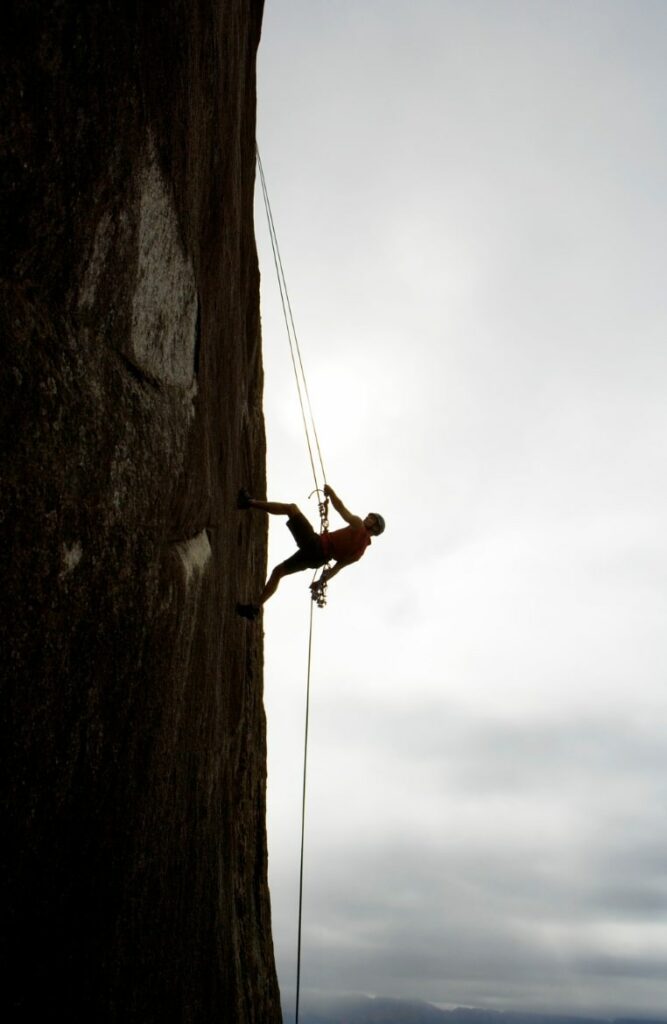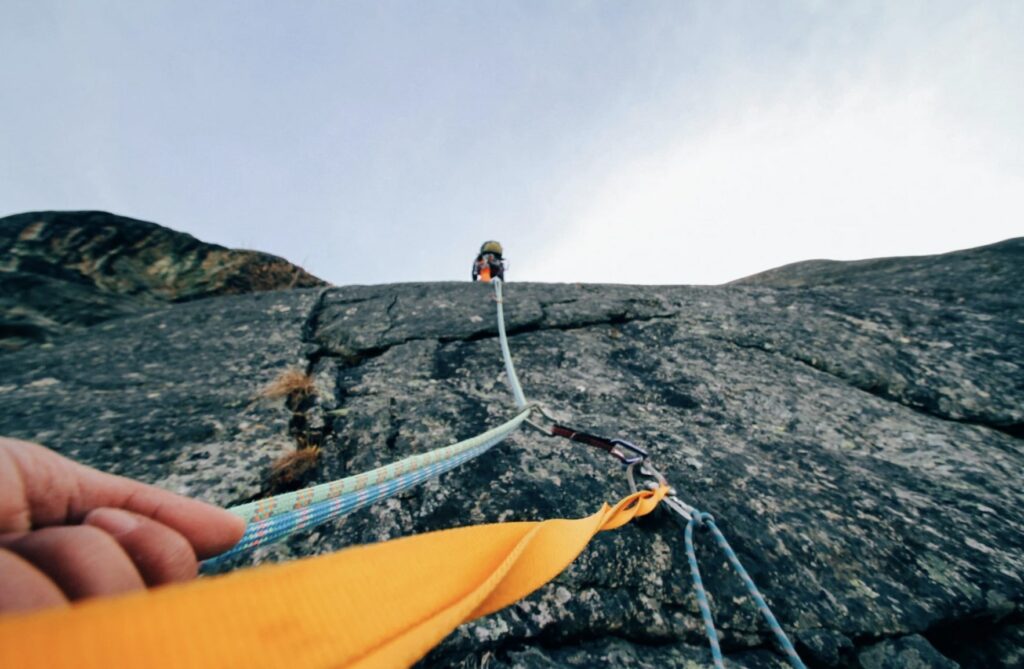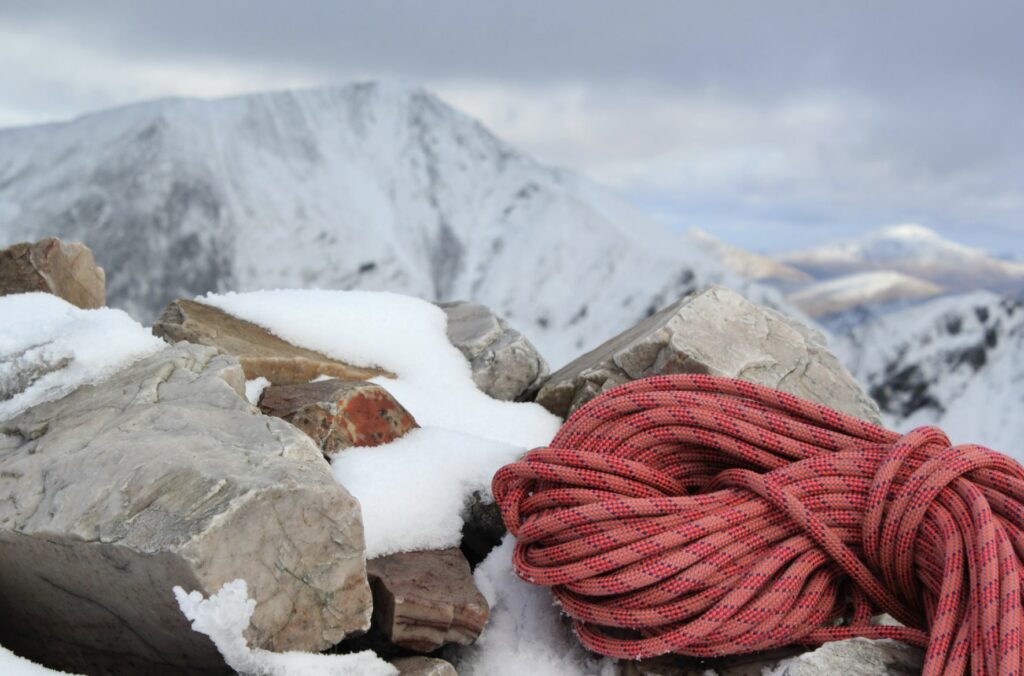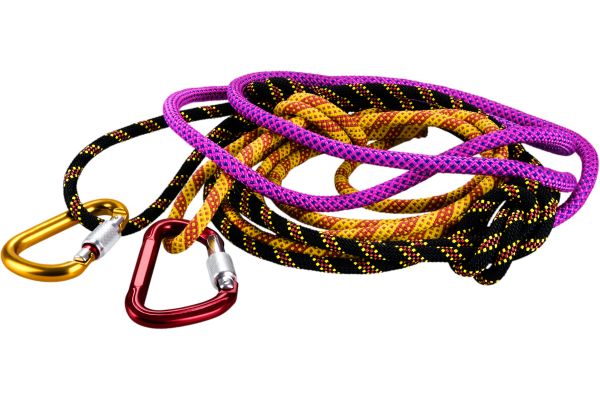How to Choose a Climbing Rope: A Complete In-Depth Guide

Climbing ropes are an essential part of any climber’s gear. They serve as a lifeline when you’re scaling heights and can significantly impact your climbing performance and safety. Choosing the right climbing rope is not a decision to be taken lightly. It requires understanding the different types of ropes, their features, and how they align with your climbing needs. This guide aims to provide you with all the necessary information to make an informed choice, ensuring your climbing experience is safe and enjoyable.
Understanding the Types of Climbing Ropes
Climbing ropes come in various types, each designed for specific climbing scenarios:
Single Ropes
These are the most common type of climbing ropes. They are designed to be used alone and are suitable for most climbing situations, from sport climbing to trad climbing. Single ropes offer simplicity and ease of use, making them a popular choice among climbers.
Advantages
- Simplicity: Single ropes are the easiest to handle and manage, making them suitable for most climbing situations.
- Versatility: They can be used for a wide range of climbing styles, from sport climbing to trad climbing.
- Safety: When used correctly, single ropes provide a high level of safety.
Disadvantages
- Limited Redundancy: If a single rope gets damaged during a climb, you don’t have a backup.
- Rope Drag: On routes with zig-zags or traverses, single ropes can suffer from significant rope drag.
Half Ropes (or Double Ropes)
Traditionally used for trad climbing, half ropes are ideal for zig-zagging routes and longer multi-pitch routes. Each rope is clipped into alternating pieces of protection, reducing rope drag and providing redundancy. This can be particularly useful in situations where a direct line up a climb isn’t possible.
Advantages
- Reduces Rope Drag: Half ropes are excellent for routes that wander or zig-zag since each rope can be clipped to different pieces of protection, reducing rope drag.
- Redundancy: If one rope gets damaged, the other rope serves as a backup.
Disadvantages
- Complexity: Managing two ropes can be more complex and requires more skill and attention.
- Weight: Carrying two ropes can be heavier than a single rope.
Twin Ropes
These are used similarly to half ropes, but both ropes are clipped into every piece of protection. They offer the highest level of safety and are typically used for alpine climbing. Twin ropes can be a bit more challenging to manage but provide an extra level of security.
Advantages
- Redundancy: Like half ropes, twin ropes provide redundancy.
- Simplicity: Twin ropes are clipped through each piece of protection together, making them simpler to manage than half ropes.
Disadvantages
- Limited Flexibility: Unlike half ropes, twin ropes must be clipped into every piece of protection together, limiting flexibility on wandering routes.
- Weight: Twin ropes can also be heavier than a single rope.
Static Ropes
These ropes are designed for situations where the rope doesn’t need to stretch, such as when rappelling or hauling gear. Static ropes are not designed to absorb the impact of a fall and should not be used for lead climbing or top-roping.
Advantages
- Durability: Static ropes are designed to be highly durable and resistant to abrasion.
- Efficiency: They are excellent for situations where stretch is not desired, such as rappelling or hauling gear.
Disadvantages
- Limited Use: Static ropes are not designed to absorb the impact of a fall and should not be used for lead climbing or top-roping.
- No Energy Absorption: In the event of a fall, static ropes do not stretch to absorb the energy, which can result in a harsher stop and potential injury.
Dynamic Ropes
These ropes are designed to stretch and absorb the impact of a fall, making them ideal for most types of climbing. The stretch in dynamic ropes reduces the force exerted on the climber and the gear during a fall.
Advantages
- Energy Absorption: Dynamic ropes are designed to stretch and absorb the impact of a fall, reducing the force exerted on the climber and the gear.
- Versatility: They are suitable for most types of climbing.
Disadvantages
- Stretch: The stretch that provides safety during a fall can also make certain activities, like hauling gear or ascending the rope, more difficult.
- Durability: Dynamic ropes may not be as durable as static ropes, especially if they are subjected to heavy use and frequent falls.
Key Features of Climbing Ropes

When choosing a climbing rope, consider the following features:
- Diameter: The diameter of a rope affects its weight, durability, and handling. Thinner ropes are lighter and handle well but may not be as durable as thicker ropes. Ropes with larger diameters tend to be more robust and provide a greater safety margin, but they are also heavier and can be more challenging to handle.
- Length: The length of your rope should be appropriate for the climbs you plan to do. For most single-pitch routes, a 60m rope is sufficient. For multi-pitch routes, a 70m or longer rope may be necessary. Always ensure that your rope is long enough to safely lower or rappel from the climb.
- Middle Mark/Bicolor: A middle mark or a change in pattern helps identify the middle of the rope, which is useful for rappelling and managing rope. Bicolor ropes change pattern or color in the middle, making it easy to identify the midpoint.
- Dry Treatment: Dry-treated ropes resist water and dirt, increasing the rope’s lifespan and performance in wet conditions. This feature is particularly useful for ice climbing or mountaineering, where the rope is likely to come into contact with snow or ice.
- End Warning Mark: A mark near the end of the rope warns you when you’re nearing the end of the rope while lowering or rappelling. This is a crucial safety feature that can prevent accidents.
Specialized Climbing Ropes

Certain climbing scenarios require specialized ropes:
- Mountaineering Ropes: These are typically dry-treated and lightweight, designed to withstand the harsh conditions of alpine environments. They are often thinner and may be used as twin or half ropes to provide redundancy.
- Ice Climbing Ropes: These ropes are also dry-treated to prevent water absorption and freezing. Ice climbing ropes need to be durable and resistant to abrasion, as they often come into contact with sharp ice and equipment.
The Role of Climbing Ropes in Different Climbing Disciplines
The type of climbing you plan to do will influence your rope choice:
- Basic Rock Climbing: A single, dynamic rope is typically used for basic rock climbing. These ropes are versatile and can handle a variety of climbing styles, from top-roping to lead climbing.
- Bouldering: Bouldering doesn’t usually require ropes as the climbing is done at lower heights over crash pads. However, a rope can be used for highball bouldering problems where falls can be more dangerous.
- Trad Climbing: Half or twin ropes are often used in trad climbing to reduce rope drag on wandering routes. They also provide redundancy, which can be a lifesaver if one rope gets damaged.
- Ice Climbing and Mountaineering: Dry-treated ropes are essential for these types of climbing due to the wet and cold conditions. Half or twin ropes are often used for redundancy and to reduce weight.
Climbing Rope Care and Durability
Proper care can significantly extend the life of your climbing rope:
- Inspecting Your Rope: Regularly check your rope for signs of wear, such as fraying, soft spots, or discoloration. Inspect the entire length of the rope, paying particular attention to the ends, which tend to receive the most abuse.
- When and How to Retire Your Rope: Retire your rope if it shows signs of significant wear or after a severe fall. Even if a rope looks fine, it should be retired after a significant fall due to potential internal damage. Store your rope in a cool, dry place away from chemicals, and avoid stepping on it, which can grind dirt into the fibers and reduce its strength.
Expert Advice on Choosing Climbing Ropes

Choosing a climbing rope ultimately depends on your personal climbing style and goals. Seek advice from more experienced climbers or professionals, and always prioritize safety. Remember, the best rope for you is the one that fits your specific needs and provides the highest level of safety.
Safety Ratings and Standards for Climbing Ropes
Understanding safety ratings is crucial. Look for ropes certified by the International Climbing and Mountaineering Federation (UIAA) or the European Committee for Standardization (CE). These organizations set standards for factors like impact force and fall rating, ensuring the rope can safely absorb the energy of a fall.
Conclusion
Choosing the right climbing rope is a critical decision that can significantly impact your safety and performance. By understanding the different types of ropes, their features, and how to care for them, you can make an informed choice that best suits your climbing needs. Always remember, safety should be your top priority. Happy climbing!
